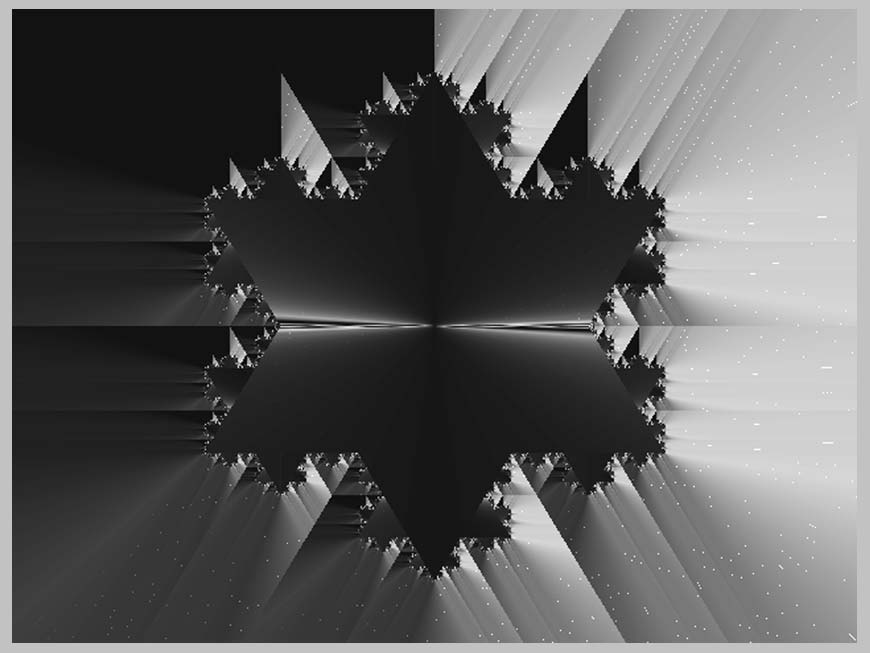

Koch Snowflake Flowform (generated with XoaS) . . .


Koch Snowflake Flowform (generated with XoaS) . . .
The Koch Snowflake was discovered in 1906 by Swedish
mathematician, Niels von Koch. "It begins with an
equilateral triangle; three new equilateral triangles
are constructed on each of its sides using the middle
thirds as the bases, which are then removed to
form a six-pointed star. This is continued in an
infinite iterative process, so that the resulting
curve has infinite length. The Koch snowflake is
noteworthy in that it is continuous but nowhere
differentiable; that is, at no point on the curve
does there exist a tangent line."
I see form, like the ripples and waves on the surface
of a fast-moving stream, as emerging out movement.
Fractals I see then as a generator of movement. When
I make an image or photo, I'm frequently pointing
to this wonderful process. In Music, this is different.
There's no pointing. One becomes, as it were, the
movement. For example, listen to this sequence with
a poem in Dutch and English—VERLOREN / LOST—follwed
by a composition of mine, the X part of RIDGE CROSSING,
the SWALLOW CLAVIER movement [mp3 / 6.4 Mb]; it's
rhythmically based on wild, wild fractals, in a single
piano (clacier) line that spirals through space like two
Swallowas in love chasing after each other. Just like
clouds cannot be understood or described with squares
or boxes, musical movement ought not be limited to 4/4.
| view performance score of
movement X, SWALLOW CLAVIER | pdf RIDGE CROSSING |
| SEE also: NOVA: HUNTING THE HIDDEN DIMENSION [streamed video]
w/ the founder of fractals, the brilliant and charming
mathematician, Benoit Mandelbrot, and an excellent
discussion of the above KOCH SNOWFLAKE pattern. |
(SOURCE: ncyclopædia Britannica 2007)
THREE MINIATURES
(1) In limit, there is freedom; in freedom, there is limit.
Even the wildest of rivers creates itself the boundaries
of the bed that order its flow.
(2) New meaning necessitates new form.
After drinking from the source of a hundred mountain
streams, even the finest of wine glasses
may no longer suffice.
(3) Form emerges out of movement;
It is the outward envelope of the rhythmic pulse of change.
If you enjoy, as I do, the art of miniature, you may
also like reading the above work of mine,
100 MINIATURES
